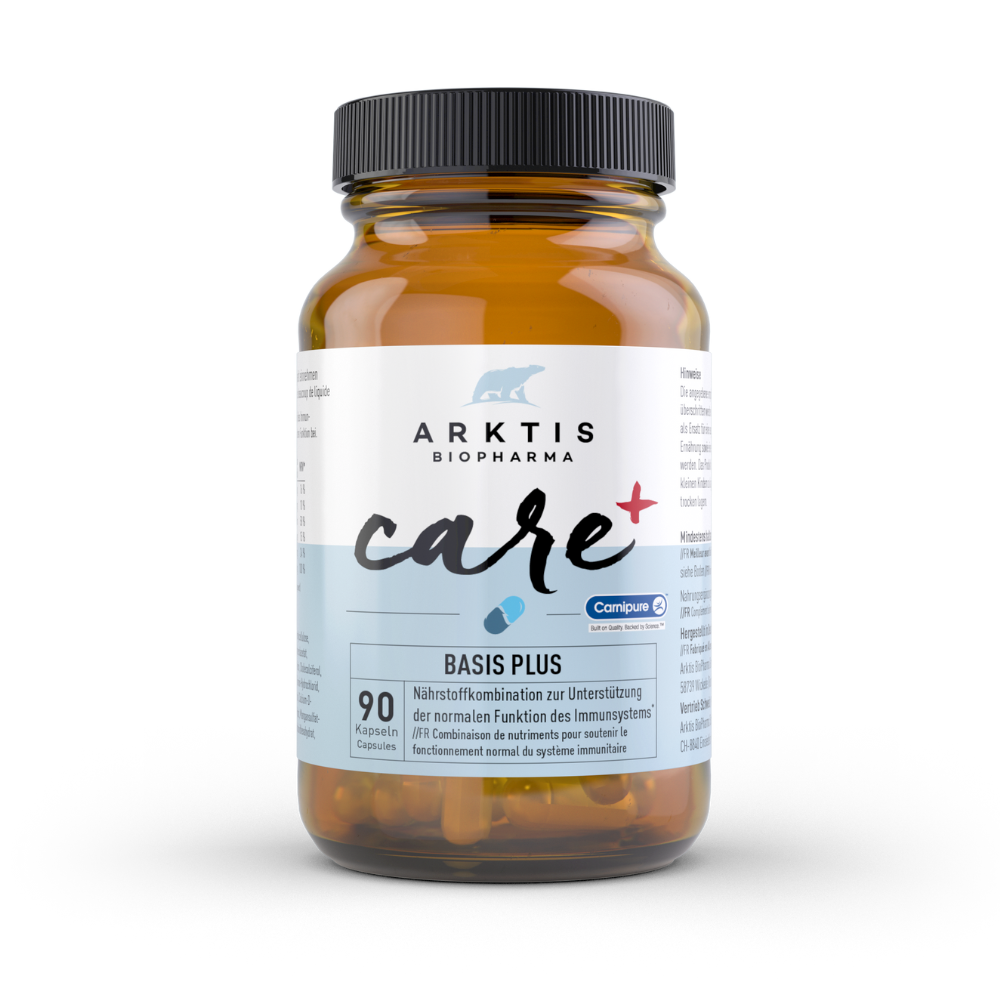Every third person living in Germany or Switzerland suffers from unclear gastrointestinal complaints! 30 - 40% of these patients believe that their symptoms are due to a food allergy or food intolerance.
In this article, I would like to give you a brief overview of the various food intolerances and briefly explain the differences. Unfortunately, there are a large number of intolerance reactions and often the reactions do not occur immediately after eating. Often hours or even days pass, so that the symptoms can no longer be clearly assigned to the food in question. For this reason, the causes often remain unexplained. However, what all intolerances actually have in common is (how could it be otherwise) the involvement of the intestines. Ultimately, this is where therapy must always begin.
I hope that I can shed a little more light on this.
| Time | Symptoms | Causes of intolerance |
| up to 0.5 hours | Typical allergy symptoms OAS, rhinitis, asthma, urticaria etc. | Allergy of the immediate type [IgE / IgG4] Pseudoallergic reactions |
| 0.5 - 3 hours | Predominantly abdominal symptoms: Meteorism, recurrent diarrhea, tenesmus But also: Migraine, ADS, depressive moods | Lactose intolerance Fructose / sorbitol malabsorption Gluten-sensitive enteropathy |
| 1 - 6 hrs. | Abdominal symptoms Tenesmus, acute diarrhea | Toxic enteritis (bacterial and fungal toxins) |
| hours - days | Chronic, non-specific symptoms Intestinal complaints, skin reactions, chronic fatigue, migraine, etc. | Allergy of the delayed type IgG4, T-cell mediated |
What is an allergy?
The term is derived from the Greek and means "to react differently". An allergy is an overreaction of the body's immune system to substances (allergens) that normally pose no danger. The immune system incorrectly recognizes it as "foreign to the body - dangerous" and defends itself against the allergen immediately after ingestion by reacting with the corresponding symptoms. There are a large number of allergens and they can be classified according to different aspects, e.g. according to the allergen source (animal hair allergens, pollen allergens, house dust mite allergens), according to the type of contact with the allergens (inhalation allergens, food allergens) or according to the pathomechanism by which the allergens trigger an allergic reaction (IgE-reactive allergens, contact allergens). The frequency of food allergies (IgE-mediated) is estimated at 0.5 - 1.5%, with up to 8% affected in infants.
laboratory diagnostics: e.g. IgE total, ECP, IgE food screen
Cross allergies

In adolescents and adults, food allergies (IgE) are mainly caused by fruit, nuts or vegetables. The food reactions can often be traced back to existing pollen allergies, whereby the antibodies formed cross-react with allergenic structures in the food that have strong similarities to the pollen allergens. This means that the body is actually allergic to one substance, e.g. birch pollen. The structures are similar to others, the body cannot distinguish this exactly and reacts to apples.
Birch pollen allergy sufferers may therefore experience allergic reactions such as swelling and itching of the oral mucosa when eating apples, although the patient is not originally sensitized to apples, but to the birch pollen allergen.
Laboratory diagnostics: e.g. IgE inhalation screen
Type IV allergies Cellular immune response
Type IV allergies are delayed (24 - 72h) allergies that are generally not life-threatening. Allergies to metals are typical, but also to food. Particularly strong metal exposures are found in dental fillings and implants, dental alloys, joint prostheses and the like, but also in jewelry, coins, cosmetic products or certain medications or vaccines. Once sensitization has taken place, metals can be the cause of a wide range of symptoms. Type IV allergies manifest themselves in uncharacteristic symptoms such as skin eczema, migraines or muscle pain. Inflammatory bowel diseases can also be caused by type IV reactions.
Laboratory diagnostics: e.g. lymphocyte transformation test (LTT)
Pseudoallergies
Pseudoallergies are intolerances to food additives such as preservatives or colorants. Pseudoallergic reactions can lead to allergy-like symptoms within 15 - 60 minutes of ingestion. However, they can also lead to symptoms after 6 - 24 hours, especially if they are based on food colors or additives. In contrast to genuine allergies, pseudoallergies are not caused by antibodies. Sensitization is also not required, which means that even initial contact with the triggering food can lead to intolerance reactions.
The most common symptoms include hives (urticaria) and reddening of the skin, especially on the face and neck.
Diagnostics: Pseudoallergy screening (CAST)
Histamine intolerance
Histamine intolerance occurs in approx. 3% of the population, with women being predominantly affected. Histamine intolerance is defined by an imbalancebetween histamine and the histamine-degrading enzyme DAO (diamine oxidase). In a healthy person, food containing histamine is largely freed of histamine in the intestine. Intolerances are not triggered by specific antibodies or sensitized cells. They develop depending on the ingested dose of the triggering substance, i.e. histamine or other biogenic amines contained in food. can be found.
Biogenic amines are mainly found in perishable animal foods (e.g. fish and fish products). High concentrations can also be found in foods that undergo biochemical and microbial changes during processing, maturing and storage (cheeses, raw sausage, raw ham, sauerkraut, spinach, yeast extracts, wine and beer). In particular, patients with allergies and a low vitamin B6 content in the body are at risk of having a lowered tolerance threshold to histamine and thus a reduced activity of diamonooxidase.
Diagnostics: e.g. diamine oxidase, DAO activity, histamine in the stool
IgG4 reactions
In addition to the classic IgE-mediated type I allergies, there are also IgG4-mediated hypersensitivity reactions, which are not type 1 allergies. IgG4 antibodies mainly occur against foods and can trigger delayed reactions(up to 72 hours after antigen contact). High IgG4 antibody concentrations are due to increased permeability of the intestinal mucosa, which means that allergens come into contact with the body's systemic defenses in larger quantities. Antibodies directed against food are produced (sensitization).
Possible causes of increased mucosal permeability include repeated antibiotic treatment and associated damage to the intestinal flora, gastrointestinal infections, inflammatory bowel diseases, environmental pollution or stress. As not every patient with an increased permeability of the intestinal mucosa shows symptoms, apparently "healthy" people with high antibody levels are also found time and again. However, it must be questioned whether these are really healthy people. If high IgG4 antibody levels are associated with symptoms, the reacting foods should be temporarily omitted. It is just as important, or perhaps even more important, to stabilize the intestinal mucosa in order to reduce the permeability for food allergens and thus counteract the constant formation of new antibodies. You can find out more about IgG4 food intolerance in our separate blog article.
Diagnostics: e.g. prescreen A, IgG4 food screen, IgG4 compact screen
Sugar intolerances
Sugar intolerances are very common in Central Europe. In Germany alone, 15-22% of the population suffer from lactose intolerance (milk sugar intolerance). The frequency of fructose malabsorption is significantly higher at 30-40%.
Lactose intolerance

Lactose intolerance is based on a deficiency of lactose-splitting enzymes, which can be congenital or acquired. Enzyme activity often decreases irreversibly with age for reasons that are as yet unknown. The organism of those affected produces too little lactase, an enzyme that is needed to digest lactose in the intestine. is required. Due to the fact that fermentation by lactase does not take place in the small intestine, or only insufficiently, the lactose molecules reach the large intestine in an unchanged state and are fermented by the bacteria located there. This produces breakdown products (mainly short-chain fatty acids), which are responsible for the symptoms of lactose intolerance: Diarrhea, flatulence, abdominal pain.
However, a variety of non-specific symptoms are also often associated with lactose intolerance: chronic fatigue, aching limbs, headaches, depressive moods, inner restlessness, concentration problems, sleep disorders, etc. Acquired lactase deficiency is not genetic, but occurs as a result of certain diseases. If the underlying disease has been successfully treated, the lactose intolerance can regress.
Diagnostics: lactose breath test, lactose intolerant gene test
Fructose
Fructose (fruit sugar) is found in many foods. So-called sugar substitutes are found not only in fruit and vegetables, but also in diabetic products and various convenience foods (e.g. ketchup, sauces, fish marinades, delicatessen salads). On average, around 50 g of fructose is ingested with food every day. Fructose malabsorption is caused by a defective transport system in the small intestine. This can be inherited (very rare -> hereditary fructose intolerance) or can also be due to a disturbed intestinal flora. Fructose is insufficiently absorbed in the small intestine, so that high concentrations pass from the small intestine into the large intestine, where the fructose is also metabolized by the flora living there. The symptoms are similar to those of lactose intolerance, although depressive symptoms and a weakened immune system are often observed due to a zinc, folic acid and tryptophan deficiency that appears to be causally linked to fructose malabsorption. Malabsorption of the sugar alcohols sorbitol and xylitol is also frequently associated with fructose malabsorption.
Diagnostics: Bacterial cleavage activity of fructose and sorbitol, fructose breath test
Sorbitol
Sorbitol is the breakdown product of glucose and fructose and is chemically an alcohol, which is also used as a sugar substitute due to its sweetness. As no insulin is required to break it down in the body, sorbitol is often used in dietary products. While sorbitol is found in natural foods (in all dried fruits, grapes, pears, plums, apricots, apples, etc.), it is subject to labelling as a food additive (E420) and is generally used in chewing gum, dental care products, lozenges, etc.
If sorbitol cannot be absorbed by the wall of the small intestine, the sorbitol molecules are metabolized by the bacteria in the large intestine, producing gas. The main symptoms of sorbitol intolerance are flatulence, diarrhea, abdominal cramps and nausea.
Diagnostics: Bacterial cleavage activity of fructose and sorbitol, sorbitol breath test
Gluten intolerance / coeliac disease
Gluten intolerance (coeliac disease) or indigenous sprue (in adults) is a disease of the small intestine that is associated with hypersensitivity to protein components of certain cereals. The persistent inflammation of the small intestinal mucosa leads to a loss of the resorptive surface, i.e. nutrients can no longer be sufficiently absorbed (-> deficiency symptoms) and digestive disorders occur.
The absorption of fat and fat-soluble vitamins in particular is often restricted. In addition, the breakdown of sugars in the intestine can also be impaired, so that lactose intolerance often occurs (secondary lactose intolerance). In contrast to classic forms of coeliac disease, which are accompanied by villous atrophy, so-called silenced or latent forms are relatively common and are often only noticeable due to an unclear lack of iron. Villous atrophy is not detectable. Gluten, the gluten protein in our bread cereals, irritates the mucous membrane structures of the small intestine and causes various symptoms (e.g. migraine, ADD), which usually occur within 3 hours of eatingfood containing gluten. After avoiding gluten, the patient is almost always free of symptoms.
Diagnostics: Gliadin and transglutaminase antibodies, genetic disposition to sprue / coeliac disease
This was really only a very rough overview. I will certainly go into IgG4 food, sugar and gluten intolerances in more detail in the next few articles.
In any case, I would like to end by telling you that an allergy or intolerance is not a fate that you have to carry around with you for the rest of your life! Together we will manage to get them under control and perhaps even eliminate them. Your lifestyle, your diet and your intestinal health are key factors that you can actively influence.
















